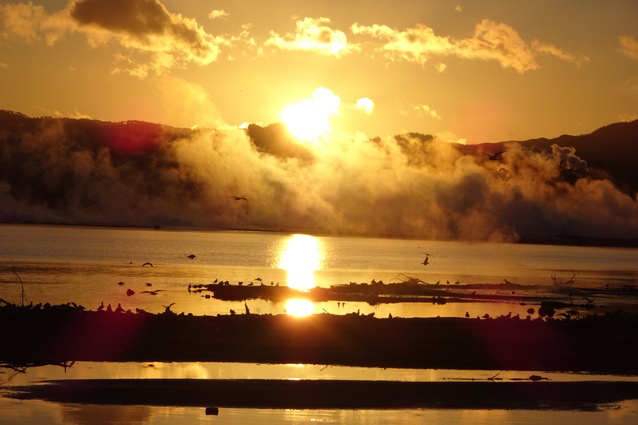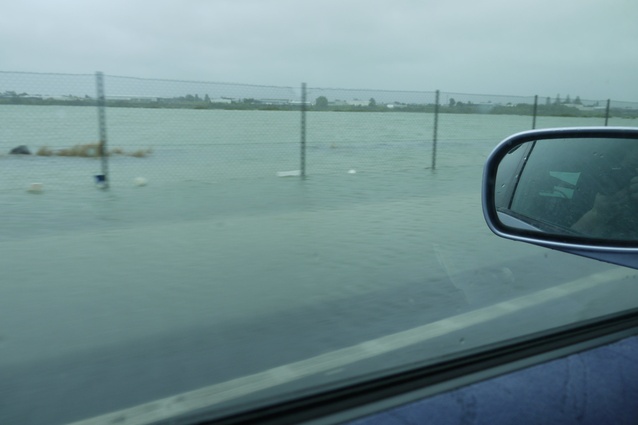After the floods
On 14 February, Prime Minister Chris Hipkins labelled Cyclone Gabrielle, in its severity and breadth of damage, the most significant weather event New Zealand has seen this century. The flooding – whole towns and vast swathes of farmland – defies belief, unlike anything we’ve seen here before.
Gabrielle came hard on the heels of massive flooding in Auckland, which the National Institute of Water and Atmospheric Research described as a one-in-200-year event, delivering, via an atmospheric river, an entire summer’s worth of rain within one day. Many in West Auckland had only just repaired their flood-damaged homes after a one-in-100-year event in August 2021. It’s a recurring story. Rain and more rain. Storm after storm. Prior to Gabrielle, the Tairāwhiti Gisborne and Hawke’s Bay areas were already sodden and unstable from Cyclone Hale in January, and the Thames-Coromandel region was facing its fifth week of severe weather this year.
In this context, undeniably coupled with the relentless momentum of climate change, it’s hard to process such statistics. Is this the future? There is some evidence increases in global warming may be reducing the frequency of tropical storms in the Pacific, but the extra energy of global warming is likely making those that arrive much more devastating. University of Auckland climate scientist Kevin Trenberth points to the oceans, currently at their warmest state ever.
“There’s no question that, as a country, we need to look at the resilience of our infrastructure, and we need to do that with a much greater sense of urgency than we’ve ever seen before.”
-New Zealand PM, Chris Hipkins.
A warmer ocean means a lot of extra fuel for storms. The atmosphere can hold increasing levels of moisture at a rate of seven per cent per degree Celsius warming. “With sea temperatures running over 3°C above normal around parts of New Zealand… there has likely been 10 to 25 per cent more moisture lurking around for storms to gather up and rain on nearby land.” The same phenomenon was behind the Pakistan floods in July-August 2022, where over 1700 lost their lives and huge regions of Pakistan were flooded.
Victoria University of Wellington Professor James Renwick cites the latest IPCC report: “There is high confidence that the magnitude and duration of atmospheric rivers are projected to increase in future, leading to increased precipitation.” If warming is limited to less than 2°C, Renwick predicts an increase in atmospheric moisture of 10 per cent or so. Concentrated into a storm, that could mean 20–30 per cent more rainfall.
What to do? Where to begin? In the aftermath of Gabrielle and the Auckland floods, the focus has been on how new infrastructure might withstand extreme weather. Hipkins: “There’s no question that, as a country, we need to look at the resilience of our infrastructure, and we need to do that with a much greater sense of urgency than we’ve ever seen before.”
“There is high confidence that the magnitude and duration of atmospheric rivers are projected to increase in future, leading to increased precipitation.”
- Professor James Renwick, Victoria University of Wellington.
On the East Coast, the key issue has been electricity supply; without it, our communication networks — copper, fibre, cellphone towers — are rendered silent and pumping stations and treatment plants for water supply and stormwater systems are useless. Grid operator Transpower declared a grid emergency advising people “should be prepared to be without power for days to weeks, rather than hours”.
While the defence forces and other emergency providers rush generators, portable water treatment units and Starlink satellite communications services to the stricken regions, the situation highlights the vulnerability of our centralised power systems and the lack of backup battery power for water and communications infrastructure. In the recovery phase and looking to the future, it’s clear more localised, resilient energy solutions, such as solar microgrids, will be needed to help mitigate such impacts and increase energy independence and security. Similarly, localised ‘sponge city’ design such as storage tanks, green roofs, rain gardens and the use of porous materials for roads and footpaths can play a part in coping with the kinds of deluges we’ve just experienced.
The flooding of the Redclyffe substation near Napier and of numerous water and wastewater pump stations in Auckland and elsewhere highlights the need to site such vital parts of infrastructure carefully. The same goes for key transport infrastructure as seen in Auckland, with the flooding of Auckland Airport and the City Rail Link tunnels. However, the sheer scale of flooding on the East Coast makes such re-siting decisions seem herculean tasks.
The same can be said of the seemingly sensible calls for a change in planning and construction rules to stop building in flood-prone and slip-prone places, plus, of course, coastal-erosion zones. While the discussion might make sense in Auckland, looking at the scale of the East Coast devastation of homes and people’s livelihoods in vineyards, orchards and farmland, such discussion becomes nonsensical. You’ve got to build back much better.
“But you have to ask why was such climate-focused thinking not integral with the new building-intensification rules, allowing up to three homes of up to three storeys to be built on most sites without the need for a resource consent?”
The question of where to build does raise a mammoth issue — the need for government to fund removal and relocation of some communities from compromised land. This complex issue is already under consideration in work on the Climate Adaptation Act (in parallel with the Natural and Built Environment and Spatial Planning Bills), which aims to address managed retreats and how to implement them.
But you have to ask why was such climate-focused thinking not integral with the new building-intensification rules, allowing up to three homes of up to three storeys to be built on most sites without the need for a resource consent? In light of what we’ve just witnessed, it’s time to make climate change architecture the primary focus of our profession.
If you were affected by the floods we have created a flood-recovery resource below:
For resources provided by Civil Defence, click here.
For information on Auckland Council’s Building Designation response to January 2023 storm, click here.
For information on the Ministry for Primary Industries cyclone recovery plan, click here.
For information regarding the Cyclone Gabrielle Taskforce, click here.











